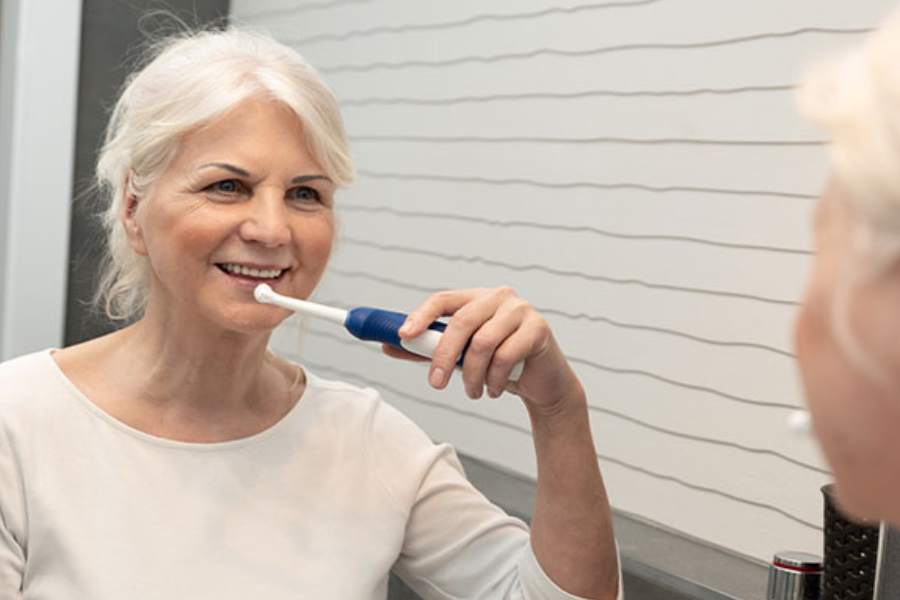Brushing and Flossing with Arthritis Pain
Posted on April 1, 2020 in Dental Health

Ignoring your dental health can lead to gum disease, cavities, and tooth loss. Slacking on dental care can also have an effect on the rest of your body. There’s more than one-way oral health and joint pain are connected. Learn what joint inflammation has in common with gum disease and tips for an oral health routine that accommodates arthritis pain.
ORAL BACTERIA, RHEUMATOID ARTHRITIS, AND JOINT PAIN
Researchers have found a significant relationship between our mouths and our joints. One study found that the fewer teeth a person has, the greater their risk is for joint inflammation. Patients with fewer than 20 teeth had eight times the risk of swollen joints as someone with all their teeth!
The National Arthritis Foundation recognizes this stat to be part of the growing research linking periodontal disease, or gum disease, with rheumatoid arthritis. Another study from the late 90’s found that people with moderate to severe periodontitis face more than twice the risk of developing rheumatoid arthritis than someone with even mild periodontitis.
Periodontal disease and rheumatoid arthritis have this in common: inflammation. Inflammation in the body can lead to inflammation in the mouth. Likewise, chronic inflammation from gum disease can impact overall health, such as higher blood pressure and cholesterol levels.
Poor dental care can also cause an to increase of bad bacteria in the mouth. This can lead to bacterial infections in the blood stream, impacting the heart. Maintaining oral health, twice-daily, will help preserve your overall health.
Day and night, rain and shine, our mouths need dental care! We know that having arthritis, particularly in the hands, can make it painful to brush and floss. However, avoiding your essential daily dental care can lead to even more pain. Discover how you can brush and floss more comfortably while still giving your mouth the care it needs.
BRUSHING AND FLOSSING WITH ARTHRITIS
Brushing and flossing problems are common for people with joint inflammation. The UK National Rheumatoid Arthritis Society has an entire webpage dedicated to dental care with arthritis.
Use these tips to ease the process of brushing and flossing:
- An electric toothbrush helps in two ways. It does the brushing work for you, and they tend to have a larger handle that is easier to grip than a traditional manual toothbrush.
- Take a seat. Sitting while brushing lets you rest an elbow on the counter for support. Remember, it’s still important to brush even if you have dentures.
- Hand-held flosser tools work well for flossing with arthritis, joint pain or dexterity issues. Hand-held flossers range in size from the smaller “interdental” flossers, to flossers with long handles and disposable flossing ends!
- Another way to replace the string altogether is an electric flosser which uses water or mouthwash to blast the plaque away.
Talk to your dentist to learn how you can live with arthritis and keep your smile healthy.
Looking for more tips on health care as we age? Check out:
*Updated April 2021